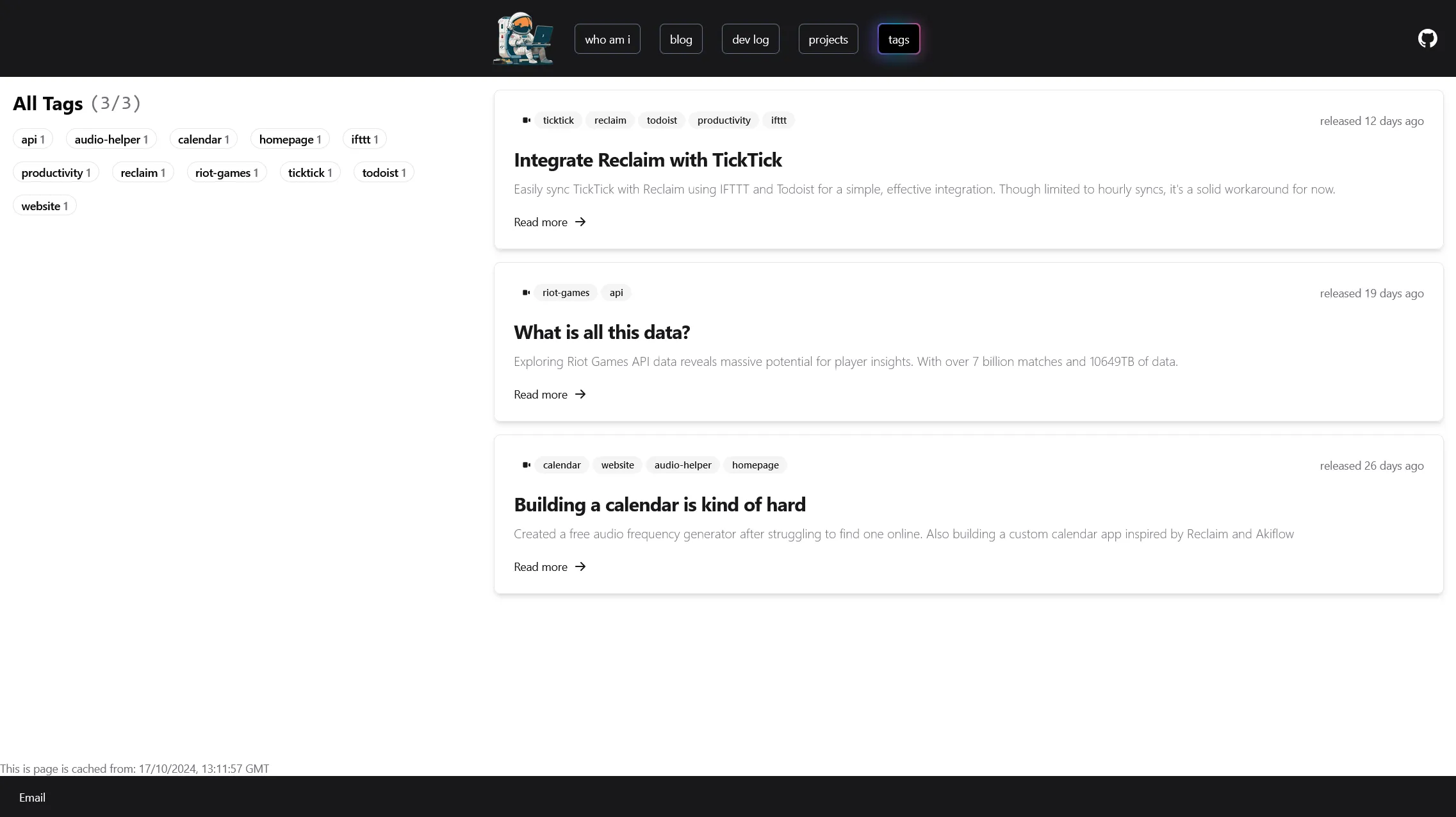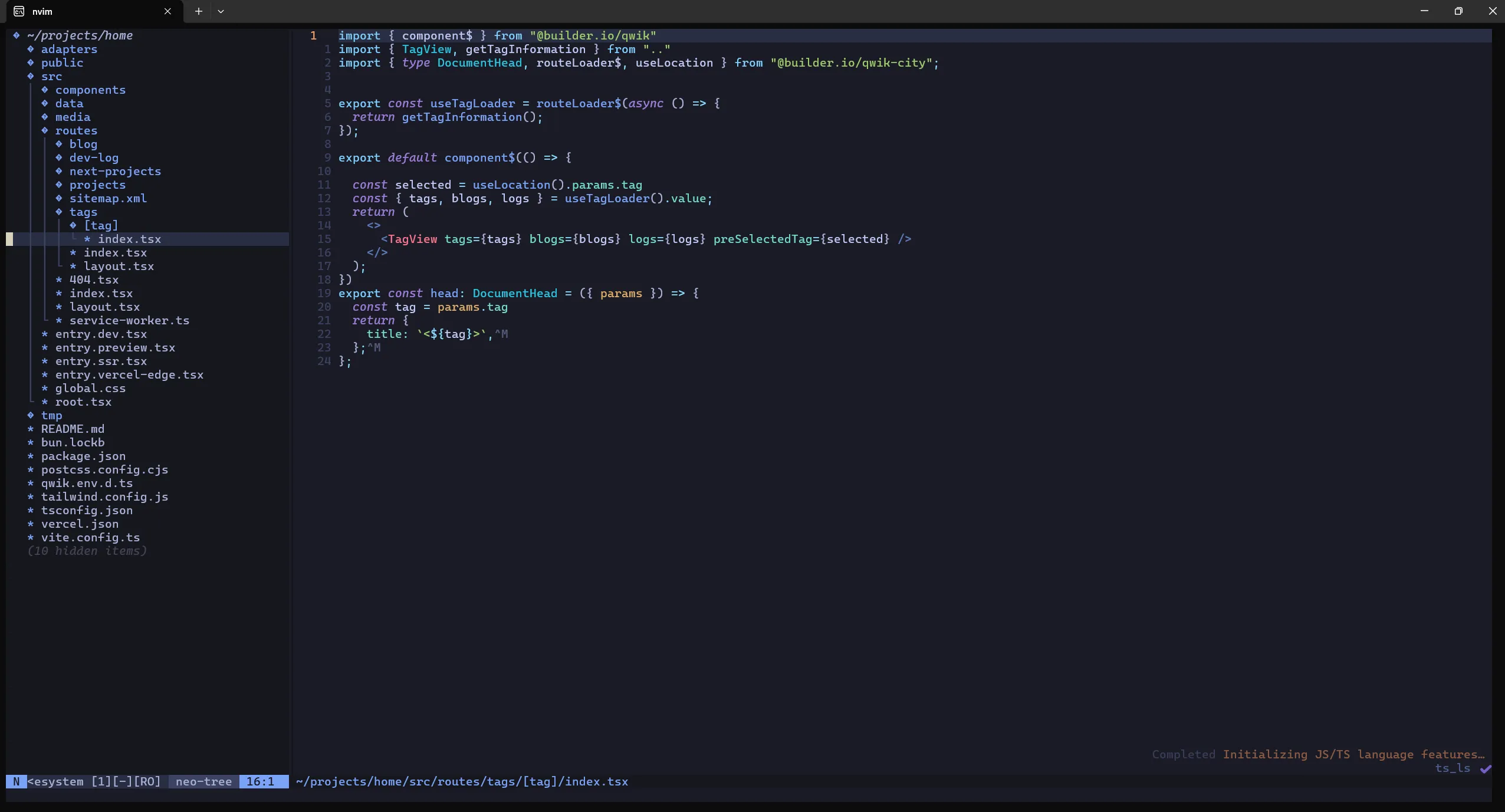Getting tags working
This week my main focus was on getting the tag system working. With the main idea being that I might want to search my own page in the future. In addition it’s better to categorize the content.
The concept was to have a list of all available tags, with all blogs and dev-logs showing next to the tags. Since the tags are supposed to be easily searchable and extractable from the markdown files themselves I had to work around those limitations a bit. In addition I also wanted to revamp the styling as I didn’t really like the old styling. So the styling also got a bit improved.
Now the only thing that I had to do was make it so that each time you click a tag on
https://www.mauroner.net/tags/ it pushes the new “path” to the history so that navigation works.
Then the last remaining problem was that the checked status would not update correctly when switching between selected tags.
The fix for that was adding a useVisibleTask$ Then
to get the window.location.pathname information on page load.
Now if you visit the page it should work as expected.

NVIM
So for some reason youtube decided to recommend this video to me
which then made me want to try out nvim. I knew some of the basics but I had never used vim outside of vi/vim and VSCode before.
So the first thing I did afterwards was look if there was a quickstart and wouldn’t you know it there was.
With this I set up my nvim config and started to play around with it. I also started to install my own plugins and configure some stuff.
Afterwards I saw this video which explained some stuff in more detail and showed some of the cool parts of nvim.
While working on this I was thinking that I would like to have a setup file which I download, execute and then I can just use it on any machine and have my setup completely configured.
So I added it to the nvim config. It uses ansible to install the different packages needed. This is the repo: kickstart github
This is how it looks like now


